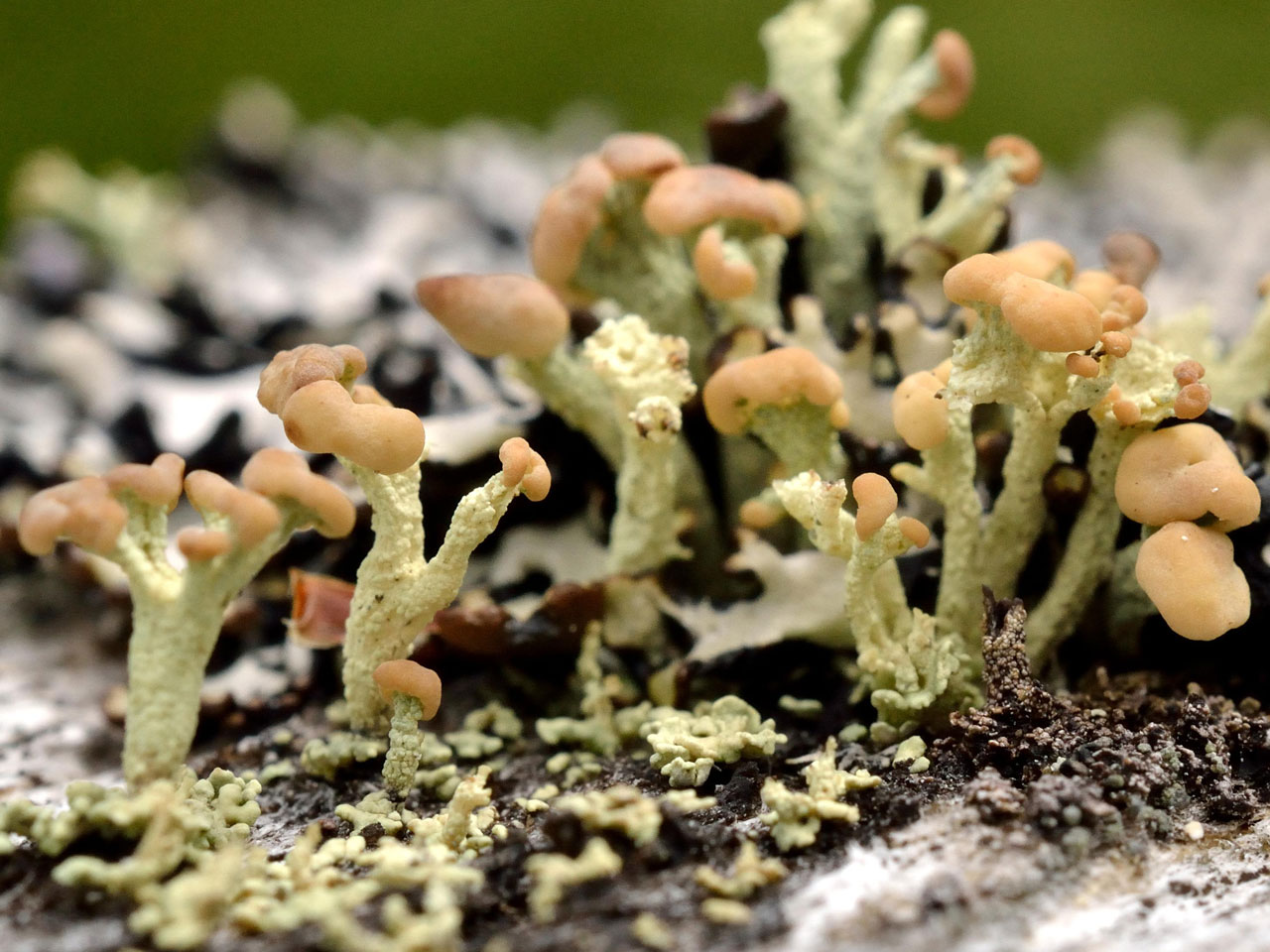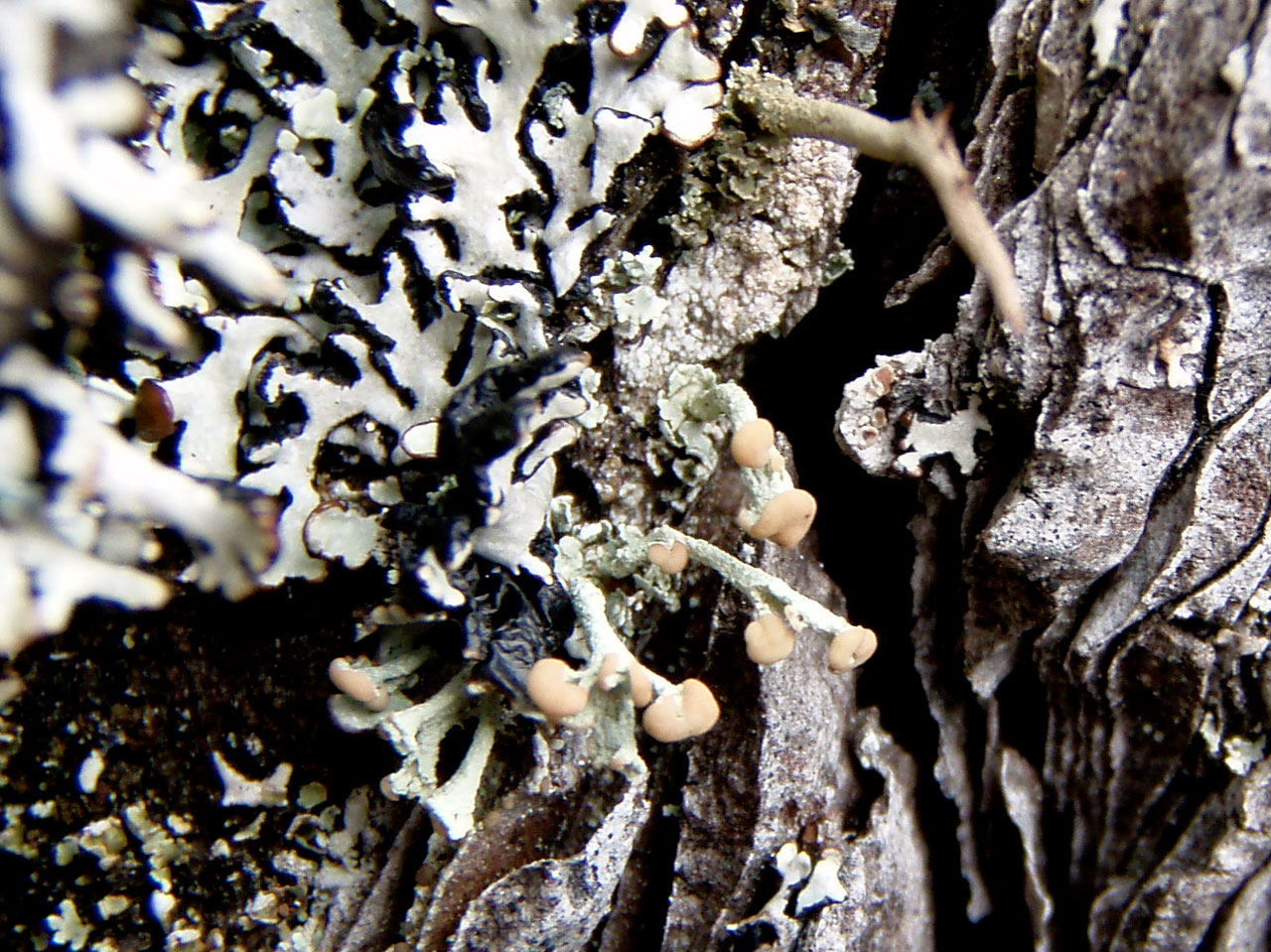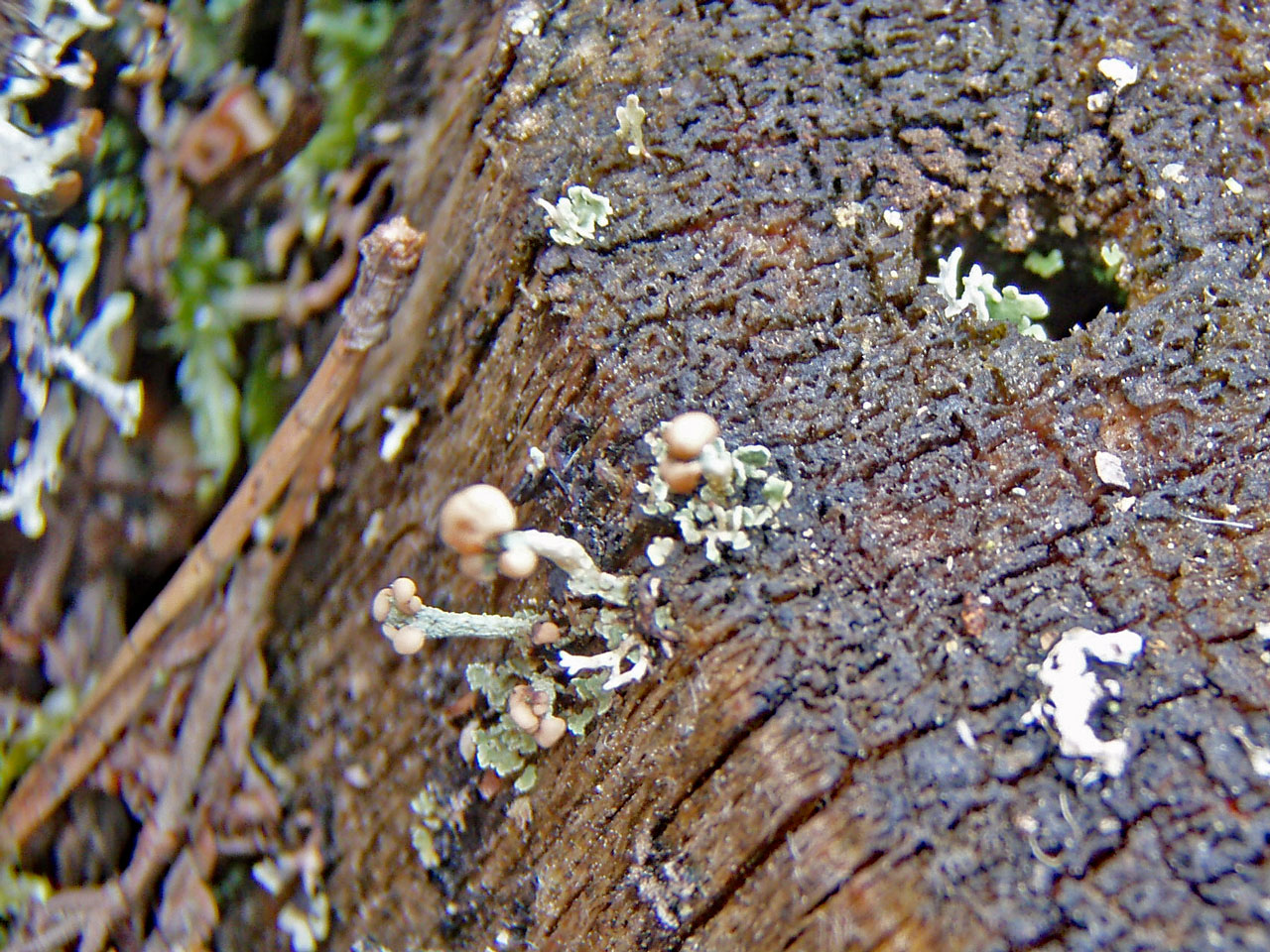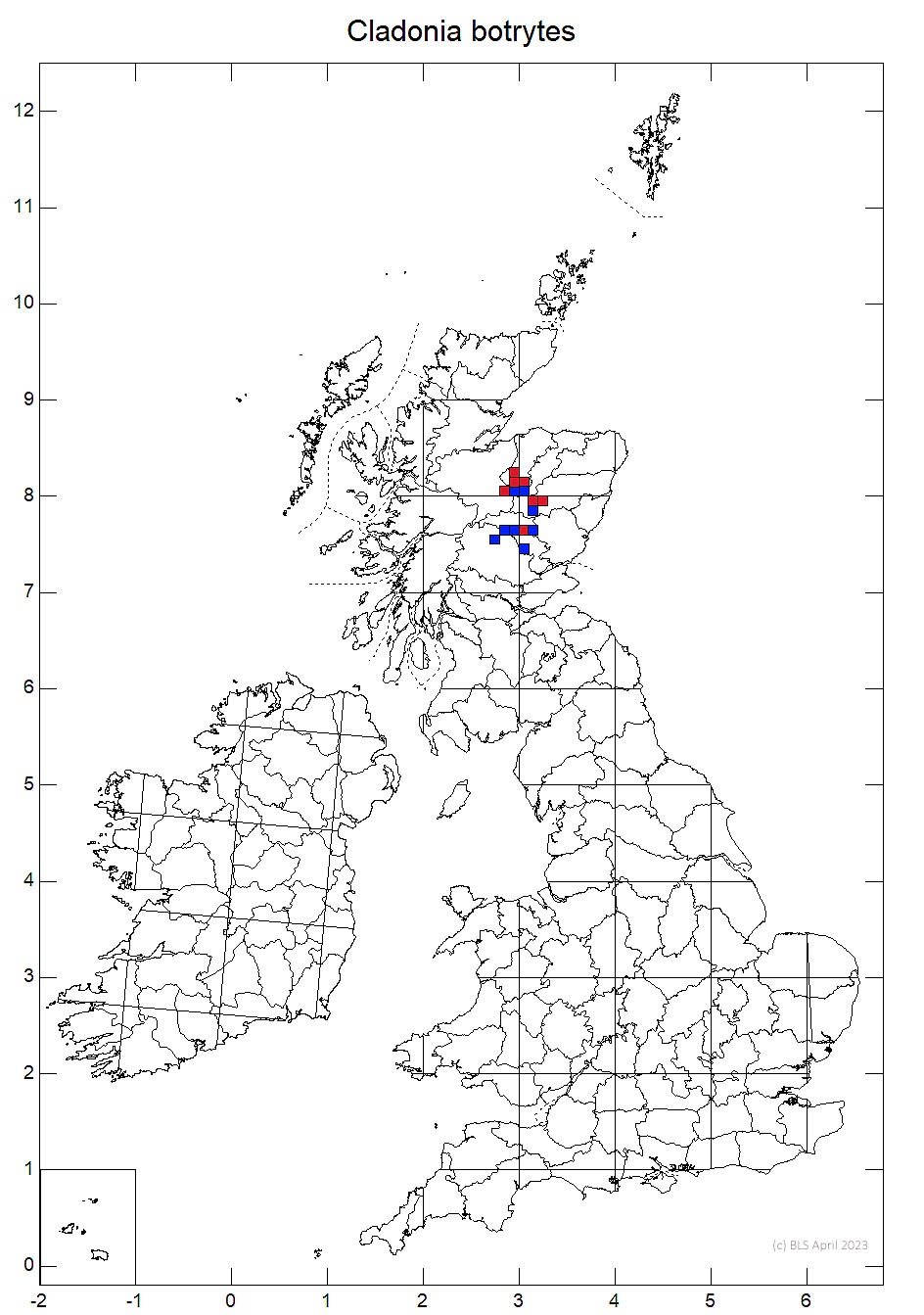Cladonia botrytes
A tiny gem of a Cladonia with short corticate podetia developing from inconspicuous squamule mats and supporting a single terminal swollen flesh-coloured to pale brown apothecia. The podetia and squamules are yellow-green, due to the presence of usnic acid. The lichen has a rather precarious existence as an early succession species on the cut stumps of conifers, mainly Pine, in boreal woodlands and conifer plantations in the eastern Central Highlands. It can also occur on peaty soil in moorland but there are only two records from this habitat in Scotland. If spotted, it is unlikely to be mistaken for anything else.
Podetia to 0.5 cm tall, yellow-green, without scyphi, usually unbranched or occasionally sparingly branched towards the apices when well developed; surface smoothly corticate, becoming ± verrucose-areolate and sometimes longitudinally fissured. Basal squamules small, scattered, rather inconspicuous, ± erect and incised. Apothecia flesh-coloured to pale brown, terminal on podetia even when these are young, sometimes also on small lateral branches near the apices. Pycnidia often present on basal squamules, with colourless gel. Thallus C–, K± yellow, KC± pale yellow, Pd–, UV– (usnic and barbatic acids).
The small size, yellow-green colour, absence of cups and pale brown to pinkish apothecia are diagnostic. C. carneola has similarly pale coloured apothecia, but always has well-developed, ± entirely finely sorediate, regular cups.
On relatively recently cut surfaces of Pinus stumps, more rarely on Picea and on dead Calluna stems; ephemeral, rather rare and very local. It has also been found twice on peaty soil, on an exposed hillside and in Calluna heath regenerating after burning in Scotland and in more frequent in this habitat in the north of Sweden (Bogomazova, 2012). The affinity of Cladonia botrytes for recently cut (4–10 years) stumps of conifers is of particular note; populations are vulnerable due to decay of the substrata (Yahr et al. 2013), with more than 90% of individual mats of thalli not persisting more than three years

N. Scotland (Cairngorm region); possibly overlooked elsewhere due to lack of focus on its specialised stump habitat. Further occurrences on humus in moorland are also possible, as moorland is an another rather under studied habitat for lichens.
A species with small ephemeral population in a transient habitat. Likely to have been favoured by less intensive management in the past, with high cut stumps in open grazed native pinewoods with slow regeneration. Modern low cut stumps in ungrazed plantations with rapid replacement by the next crop are a less favourable habitat and trees are now usually not felled in native pine woods.
Britain: Critically Endangered
Scotland: Priority Taxon for Biodiversity in Scotland
Bogomazova, K. (2012) Ecology of the lichen Cladonia botrytes in Sweden. Master’s thesis, Uppsala. Link
Pino-Bodas, R., Sanderson, N., Cannon, P., Aptroot, A., Coppins, B., Orange, A. & Simkin, J. (2021). Lecanorales: Cladoniaceae, including the genera Cladonia, Pilophorus and Pycnothelia. Revisions of British and Irish Lichens 19: 1-45. Link
Yahr, R., Coppins, B.J. & Coppins, A.M. (2013). Transient populations in the British conservation priority lichen, Cladonia botrytes. Lichenologist 45: 265–276.
Text by Neil A Sanderson, based Pino-Bodas et al (2021)





